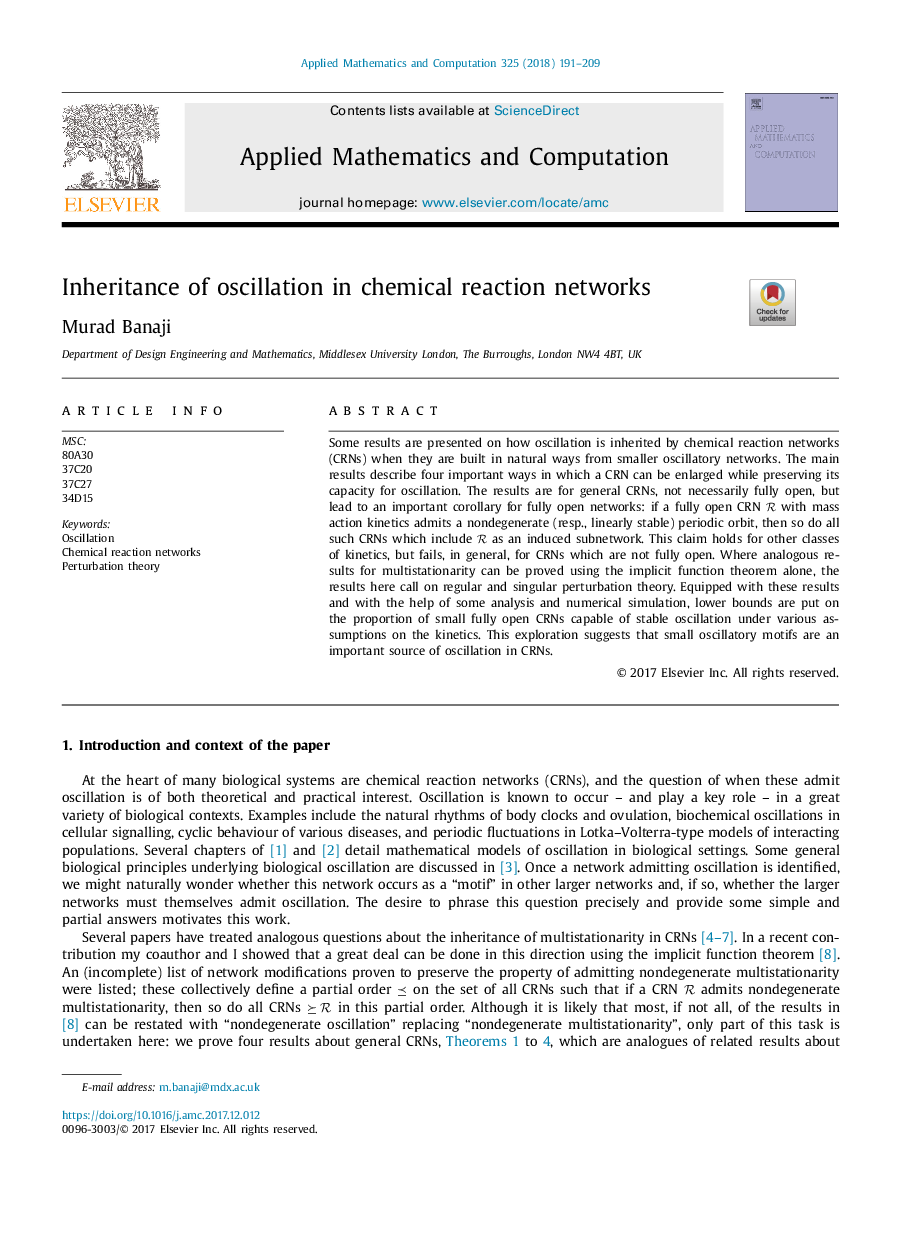| Article ID | Journal | Published Year | Pages | File Type |
|---|---|---|---|---|
| 8901168 | Applied Mathematics and Computation | 2018 | 19 Pages |
Abstract
Some results are presented on how oscillation is inherited by chemical reaction networks (CRNs) when they are built in natural ways from smaller oscillatory networks. The main results describe four important ways in which a CRN can be enlarged while preserving its capacity for oscillation. The results are for general CRNs, not necessarily fully open, but lead to an important corollary for fully open networks: if a fully open CRN R with mass action kinetics admits a nondegenerate (resp., linearly stable) periodic orbit, then so do all such CRNs which include R as an induced subnetwork. This claim holds for other classes of kinetics, but fails, in general, for CRNs which are not fully open. Where analogous results for multistationarity can be proved using the implicit function theorem alone, the results here call on regular and singular perturbation theory. Equipped with these results and with the help of some analysis and numerical simulation, lower bounds are put on the proportion of small fully open CRNs capable of stable oscillation under various assumptions on the kinetics. This exploration suggests that small oscillatory motifs are an important source of oscillation in CRNs.
Related Topics
Physical Sciences and Engineering
Mathematics
Applied Mathematics
Authors
Murad Banaji,
